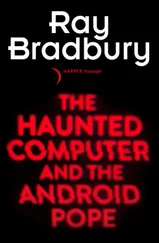In retrospect, the first tremors of the great software shakeout of 1984 can be traced back to a single day in 1982. By this time, the home computer software business had grown from a loose confederation of hobbyists into a genuine industry, but it was still dwarfed by such video game giants as Atari and Activision. While Brøderbund, Sirius, and Sierra On-Line were celebrating revenues of hundreds of thousands per month, Atari was nearing a hundred million dollars per month in sales.
And then the tide turned. On December 8, 1982, Ray Kassar announced that Atari’s sales had dived and that earnings had fallen more than 50 percent. There were suspicions of stock manipulation—a couple of officers had sold substantial amounts of stock a week before the disclosure. Even more suspicious in the eyes of many industry observers was the timing of the announcement. A new and highly touted competitor, Imagic, had been planning to go public only a week later. Atari’s announcement scrubbed any possibility of Imagic’s successfully launching its public stock offering.
But the bad news had only just begin. At first, only the game machine companies suffered. Mattel pulled out of the video game business in January 1983. Games by Apollo collapsed in June, resulting in that company’s owing its advertising agency $24 million. The Quaker Oats subsidiary U.S. Games was the next to go, in July 1983. Even Activision, the leading video game software independent, only barely succeeded in going public that summer, and if the public had known then what it was to discover over the following six months, Jim Levy, like his counterparts at the other video game companies, would have been left in the hands of his venture backers too.
It would be some time, however, before this fallout would descend upon the home computer industry. In fact, home computer software people watched all the carnage in the video game industry with considerable complacency. Nineteen-eighty-three turned out to be a banner year for most of us. “Naturally the game machines are doomed,” we said to one another. “How can any game machine even begin to compete with a real computer?” And even though companies like Activision (with annual sales of $150 million at one time) were ten or twenty times the size of the home computer software companies, these video game-based businesses were still seen only as software dinosaurs, mired in a market without a future, turning out trivial products for increasingly sophisticated consumers.
That image turned out to be accurate. What those of us in the home computer industry failed to foresee was that the collapse of video game software portended an eventual depression in sales of entertainment-oriented software for personal computers as well. Indeed, in 1983 it was hard to imagine that the woes of Atari and the video game business would touch the computer world. The home computer market was expanding at an unabated pace. The personal computer was featured as Time magazine’s “Man of the Year.” And more than 150 magazines had sprung up to serve the home computer industry, each one of them sporting hundreds of pages of advertising promoting an incredible array of products.
Flipping through a copy of Softalk in 1982 or 1983 was like walking through a crowded video arcade. Hundreds of four-color full-page ads shrieked for one’s attention, promoting everything from floppy disks to competitors’ magazines. Discount mail-order houses were heavily represented, as well as business-oriented software companies like Software Arts, the creators of VisiCalc. Dozens of little hardware companies were manufacturing peripherals that added extra features to computers—clocks and fans and extra-high-resolution-graphics. Lots of new software companies started showing up. And there were computer games. Hundreds of them. The market expanded faster than the competition.
The microcomputer software market in 1983 was especially boosted by the efforts of educational software publishers like Spinnaker. Spinnaker’s sales department was doing its job to fulfill the marketing department’s master plan. The product line looked like a line, and Spinnaker was able to persuade retailers to display its products in the most visually impressive manner—side by side, at eye level. Spinnaker’s apparent success at pursuing this strategy was one of several factors (the huge profits raked in by independent software publishers in the previous three years being most prominent among them) that drew larger established companies into the microcomputer software business.
Spinnaker provided the kind of model for a software division that corporate management could sell in its own board-rooms. Here was one new division that investor relations departments wouldn’t scream about. Major book publishers and television companies observed Spinnaker’s success and resolved to emulate it.
CBS Video Games had been organized in the summer of 1982 as part of the parent company’s toy division. CBS Software, organized at the same time, was a separate operation, not connected with the toy division. Initially, CBS Video Games appeared to be modeled after Activision. Its products were games. Its competitive advantage, CBS evidently thought, would lie in the complexity and sophistication that CBS, with all its financial resources and media savvy, could bring to the products by “loading” the game cartridges with expensive additional memory.
But CBS Video Games didn’t prosper, simply because the video game market was shrinking at the same time the number of competitors was expanding. The president of CBS Software, Ed Auer, decided to strike out in a different direction—away from games for the sake of games. He decided to move the company toward educational software. He signed up top-flight educational software developers like Joyce Hakansson to produce a whole new lineup of products. By the summer of 1983, most of CBS Software’s products were presented as “educational.” Even his games were thinking games, like Bridge and Forecast, a weather forecasting game.
CBS wasn’t the last of the major corporations to enter the microcomputer software market; indeed, it was one of the first of many. With CBS in the game, major media corporations, from Simon & Schuster to Reader’s Digest, began to look hungrily at this new market that seemed to have appeared overnight. In 1983, the rumor that soon became common wisdom among software-industry watchers held that the big corporations were going to move in soon, pay top dollar for the best products, put on an advertising display that would blow the cottage-industry folks out of the water, and dominate the industry by the end of the year. As early as 1982, that was what people like John Brockman believed was bound to happen.
Brockman was a new phenomenon in the software world—a milieu in which flamboyant characters and new phenomena were hardly rare. For starters, Brockman wasn’t a software person or a marketing expert or even a venture capitalist. He was a literary agent. He didn’t live in Silicon Valley; he lived in New York (with the obligatory weekend place in Easthampton). He and his partner, Katinka Matson, had represented such serious nonfiction literary luminaries as John Lilly, Gregory Bateson, and Stewart Brand.
Back in the 1960s, Brockman and Matson had been involved in the “counterculture” scene in New York, Berkeley, and Cambridge. Brockman himself had organized “happenings” and had had a kind of new-age literary salon called “The Reality Club.” Then, during the 1970s, he and Matson concentrated on building a successful literary agency. But they missed the action, the excitement, the sense of community that faded away with the end of the Woodstock era. In November 1982, when they attended a computer trade show, they noted that a similar kind of excitement could be found in this new, little-understood industry. Something was brewing in the software world, and it looked to be as potentially profitable as it was exciting.
Читать дальше










